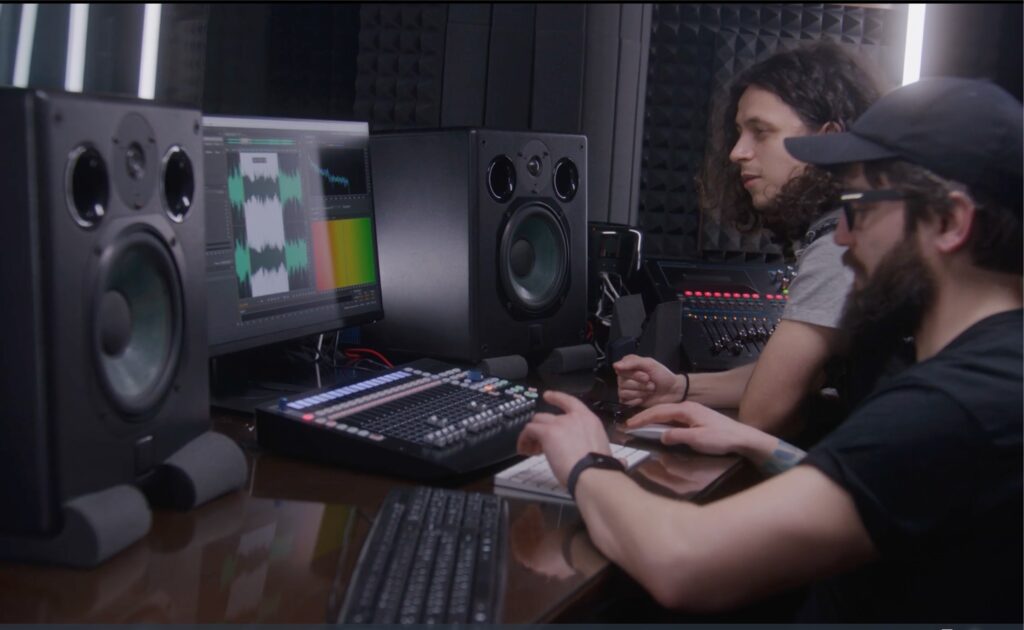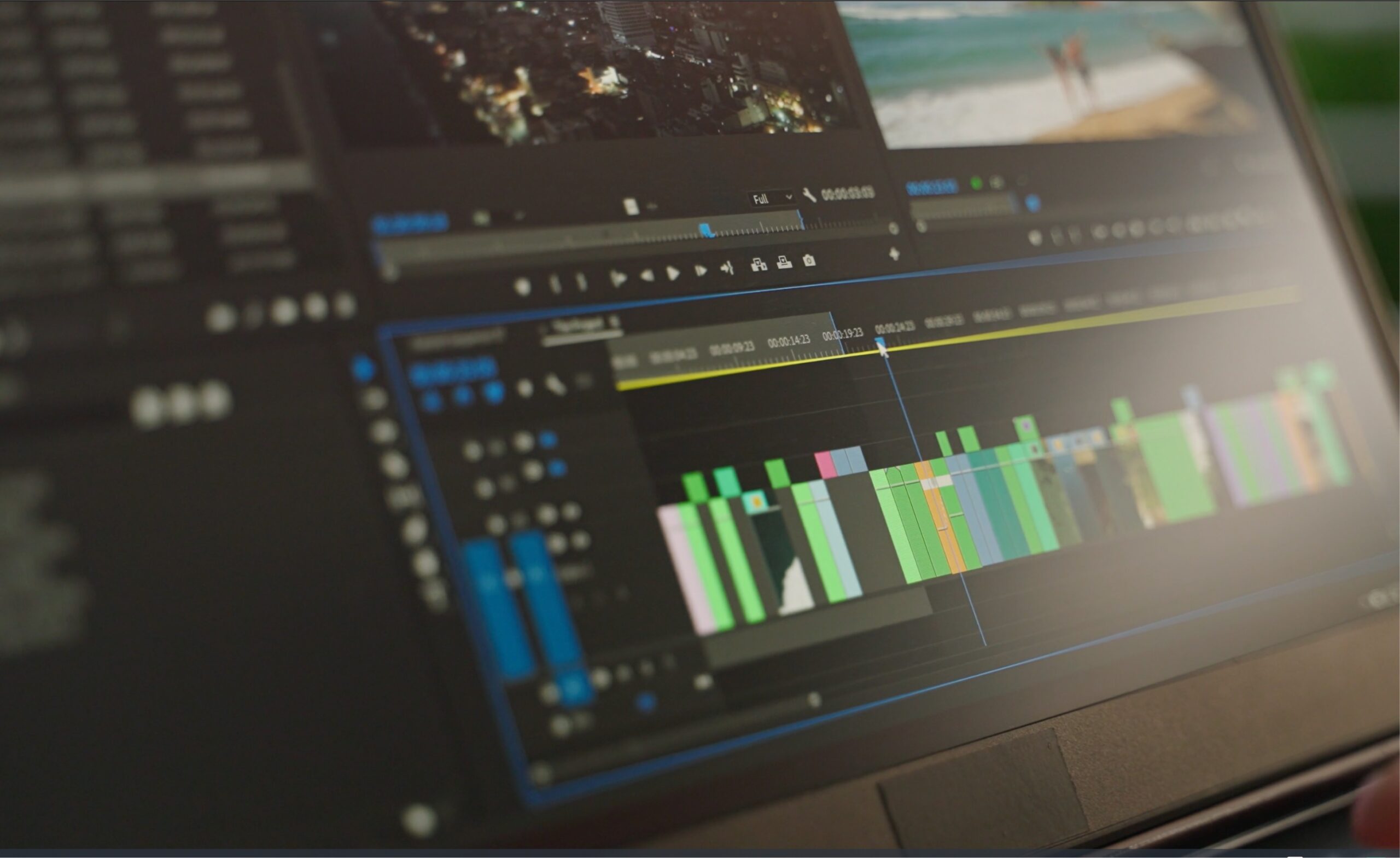Video editing is a complex and intricate process that involves several stages to transform raw footage into a polished and visually appealing final product. Understanding what are the stages of video editing is essential for anyone involved in creating compelling visual content.
The video editing process encompasses a series of carefully planned and executed steps that contribute to the overall workflow. From pre-production to post-production, each stage plays a significant role in shaping the final video.
In this article, we will delve into the three main stages of video creation: pre-production, production, and post-production. We will explore the tasks involved in each stage, the importance of proper planning and preparation, and how to bring all the elements together to create a captivating video.
Key Takeaways:
- The video editing process consists of several stages that are crucial for creating high-quality visual content.
- The three main stages of video creation are pre-production, production, and post-production.
- In pre-production, tasks such as scripting, storyboarding, and location scouting set the foundation for a successful video shoot.
- During production, filming and recording take place, capturing the necessary raw material for video editing.
- Post-production is the final stage where the footage is edited, sound is recorded, and visual effects are applied to create the finished video.

The Three Stages of Video Creation
Video creation is a dynamic process that encompasses three main stages: pre-production, production, and post-production. Each of these stages plays a vital role in the overall video editing process, contributing to the creation of visually stunning and engaging content.
Pre-production
The pre-production stage is where the groundwork is laid for a successful video. It involves meticulous planning and preparation, including tasks such as scripting, storyboarding, location scouting, and casting. This stage ensures that all necessary elements are in place before production begins, setting the stage for a smooth and efficient video shoot.
Production
The production stage is where the actual filming and recording take place. This is when all the planned elements come together, and the vision starts to come to life. Filming is carried out on location, and sound is recorded to capture the raw material needed for the video. During production, adjustments and reshoots may be necessary to ensure the desired quality and cohesiveness of the footage.
Post-production
Post-production is the final stage of video editing, where all the pieces are brought together to create the finished product. It involves editing the footage, adding sound effects, applying colour grading and correction, and incorporating visual effects. This stage is where the magic happens, transforming raw footage into a polished, professional video that captivates and engages the audience.
Understanding the three stages of video creation is essential for anyone involved in video editing. Each stage requires careful attention to detail and seamless coordination to produce high-quality content. Whether you are a beginner or an experienced professional, mastering these stages will empower you to create impressive videos that leave a lasting impact.
Pre-production: Planning and Preparation
Pre-production is an essential stage in the video editing process that involves meticulous planning and preparation. It lays the foundation for a successful and smooth execution of the overall production. During the pre-production phase, several key tasks are undertaken to ensure that the final video meets the desired vision and objectives.
One of the crucial tasks in pre-production is scripting, where the storyline is developed and the dialogue is written. A well-crafted script serves as a guide for the production team and ensures a coherent narrative. Storyboarding, another important aspect of pre-production, involves creating a visual representation of each scene. It helps in visualising the shots, camera angles, and overall composition, aiding in effective communication with the production team.
In addition to scripting and storyboarding, location scouting is undertaken to identify suitable filming locations that align with the video’s requirements. This involves visiting potential locations, assessing their viability, and obtaining the necessary permissions for filming. Casting is also an integral part of pre-production, where actors are selected based on their suitability for the roles. The casting process involves auditions and screen tests to ensure the right fit for the characters.
| Pre-production Tasks | Summary |
|---|---|
| Scripting | Developing the storyline and writing the dialogue. |
| Storyboarding | Creating a visual representation of each scene. |
| Location Scouting | Identifying suitable filming locations. |
| Casting | Selecting actors for the roles. |
By thoroughly planning and preparing during the pre-production stage, video editors can ensure a well-organised and efficient workflow. This sets the stage for a successful production, enabling the smooth transition into the next phase of video editing.
Production: Filming and Recording
The production stage is a pivotal part of the video editing process. It involves the actual filming and recording of the scenes that will be later used to create the final product. During this stage, the director, cinematographer, and crew work together to capture the necessary footage and sound that will bring the video to life. Filming takes place on location or in a controlled environment, depending on the requirements of the project.
Sound recording is an essential aspect of production, ensuring that the dialogue, ambient noise, and other audio elements are captured with clarity. A professional sound recordist or audio technician ensures that the sound quality meets the desired standards. The recorded sound will be synchronised with the filmed footage during the post-production stage.
In some cases, reshoots may be necessary to ensure the desired quality or to fix any issues that may have occurred during the initial filming. This can be due to technical problems, performance issues, or other unforeseen circumstances. Reshoots allow the production team to make necessary adjustments and improvements before proceeding with the post-production process.
| Pros | Cons |
|---|---|
| Opportunity to capture authentic performances and visuals | Potential logistical challenges in coordinating the crew, equipment, and locations |
| Ability to adapt and make creative decisions on set | Possibility of unexpected issues requiring reshoots |
| Collaborative and dynamic environment | Time constraints and pressure to meet deadlines |
The production stage is a critical part of video editing, as it lays the foundation for the subsequent post-production process. The footage and audio recorded during production serve as the raw materials that will be refined and shaped during editing to create the final video.
Post-production: Bringing It All Together
Post-production is the final stage of video editing, where all the pieces of the puzzle come together to create a visually captivating and cohesive video. This stage involves several key processes, including editing, colour grading, sound recording, and the addition of visual effects. By applying these techniques effectively, you can enhance the overall quality and impact of your video.
One of the primary tasks in post-production is editing the footage. This involves selecting the best shots, arranging them in a logical sequence, and trimming unnecessary content. Through careful editing, you can craft a compelling narrative and maintain the viewer’s engagement throughout the video.
Colour grading is another essential aspect of post-production. It involves adjusting the colours and tones of the footage to create a specific mood or atmosphere. By manipulating the colours, contrast, and saturation, you can enhance the visual appeal and bring a cohesive look to the entire video.
In addition to editing and colour grading, post-production also includes sound recording. This step involves adding or enhancing sound effects, adjusting the audio levels, and ensuring clear and crisp sound quality. By paying attention to the audio details, you can create a more immersive viewing experience for your audience.
Finally, visual effects play a vital role in post-production. These effects can range from subtle enhancements to dramatic transformations, depending on the creative vision for the video. Visual effects can add an extra layer of visual interest and realism to the footage, making it more visually captivating and memorable.
Benefits of Effective Post-production Techniques
Effective post-production techniques can significantly enhance the overall quality and impact of your video. By utilising editing, colour grading, sound recording, and visual effects, you can create a visually stunning and captivating video that engages and resonates with your audience.
Through careful editing, you can ensure that your video flows smoothly and effectively communicates your message. Colour grading adds a professional touch and creates a consistent look throughout the video. Sound recording enhances the overall audio experience, making it more immersive and enjoyable. Visual effects add that extra layer of visual interest, making your video stand out from the rest.
| Key Post-production Techniques | Benefits |
|---|---|
| Editing | – Creates a compelling narrative – Maintains viewer engagement |
| Colour Grading | – Enhances visual appeal – Creates a consistent look and mood |
| Sound Recording | – Provides clear and crisp audio – Adds depth and immersion |
| Visual Effects | – Adds visual interest and realism – Makes the video memorable |
Post-production is a critical stage in the video editing process, as it brings together all the elements and transforms raw footage into a polished and engaging video. By utilising effective post-production techniques, you can elevate the quality and impact of your videos, leaving a lasting impression on your audience.
The Five Stages of Video Post-production
Video post-production is a complex process that involves several stages to transform raw footage into a polished and engaging final product. These five stages, namely logging footage, assembling footage, rough cut, fine cut, and final cut, are essential for achieving professional-quality video editing.
Logging Footage
The first stage of video post-production is logging the footage. This involves reviewing and organising all the footage captured during the production stage. It includes categorising and labeling each clip based on its content and relevance to the overall video. Properly logging footage saves time and makes it easier to locate specific clips during the editing process.
Assembling Footage
Once the footage is logged, the next stage is assembling the footage into a timeline. This involves selecting the best shots and arranging them in the desired order to tell a cohesive story or convey a particular message. The editor focuses on establishing the structure and flow of the video by placing clips in the correct sequence.
Rough Cut, Fine Cut, and Final Cut
After the footage is assembled, the editor moves on to creating the rough cut. In this stage, the editor trims the clips and arranges them to create a basic version of the video. The rough cut serves as the foundation for further refinement.
The next stage is the fine cut, where the editor focuses on refining the edit by adjusting the timing, transitions, and pacing of the video. This stage requires attention to detail and precision to ensure a seamless and engaging viewing experience.
Finally, the editor completes the final cut, which includes adding finishing touches such as color grading, motion graphics, and visual effects. This stage aims to enhance the overall visual appeal and professionalism of the video.
By following these five stages of video post-production, editors can transform raw footage into a polished and visually compelling final product. Each stage contributes to the overall refinement and enhancement of the video, allowing editors to create high-quality visual content that captivates audiences.
| Stage | Description |
|---|---|
| Logging Footage | Reviewing and organising captured footage |
| Assembling Footage | Arranging selected shots in the desired order |
| Rough Cut | Creating a basic version of the video |
| Fine Cut | Refining the edit with attention to detail |
| Final Cut | Adding finishing touches and enhancements |
Conclusion
In conclusion, understanding the stages of video editing is vital for creating high-quality visual content. By following a systematic approach and utilising video editing software effectively, you can enhance the overall impact of your videos. Incorporating professional video editing tips can further elevate the quality and appeal of your visual content.
One key aspect of successful video editing is the choice of video editing software. There are numerous options available in the market, each with its own set of features and capabilities. It is essential to choose a software that caters to your specific needs and workflow. Popular video editing software includes Adobe Premiere Pro, Final Cut Pro, and DaVinci Resolve. These software packages offer a wide range of tools and functionalities to assist you at every stage of the video editing process.
Additionally, implementing professional video editing tips can greatly enhance the quality and professionalism of your videos. Some valuable tips to consider include maintaining consistency in color grading and visual effects, optimising audio levels and quality, utilising keyframe animation for smoother transitions, and organising your project files and assets efficiently. These tips, when combined with your creativity and storytelling skills, can help you create impressive and captivating videos.
Mastering the stages of video editing empowers you to produce visually appealing and engaging videos that resonate with your audience. Whether you are editing for personal projects, business promotions, or creative endeavors, a solid understanding of the video editing process is essential for achieving your desired results. By embracing the power of video editing software and implementing professional video editing tips, you can take your visual content to new heights and stand out in an increasingly competitive digital landscape.
FAQ
What are the stages of video editing?
The stages of video editing include pre-production, production, and post-production.
What happens during the pre-production stage?
During pre-production, tasks such as scripting, storyboarding, casting, and location scouting take place.
What is involved in the production stage?
The production stage is where filming and sound recording occur, with reshoots sometimes being necessary.
What happens during the post-production stage?
Post-production involves editing the footage, applying colour grading, adding sound effects, and incorporating visual effects.
What are the five stages of video post-production?
The five stages of video post-production are logging the footage, assembling the footage into a timeline, creating a rough cut, refining the cut to create a fine cut, and completing the final cut with colour grading, motion graphics, and visual effects.
Why is understanding the stages of video editing important?
Understanding the stages of video editing helps in creating high-quality visual content and achieving the desired impact.
How can video editing software and professional tips enhance the quality of videos?
By utilising video editing software effectively and incorporating professional tips, the overall quality and appeal of videos can be elevated.





